This time, I didn't have to eat a bland salad at the hotel restaurant. I found my own salad, out back, in a field. Come into my post and get to know some great plants for spring salads.
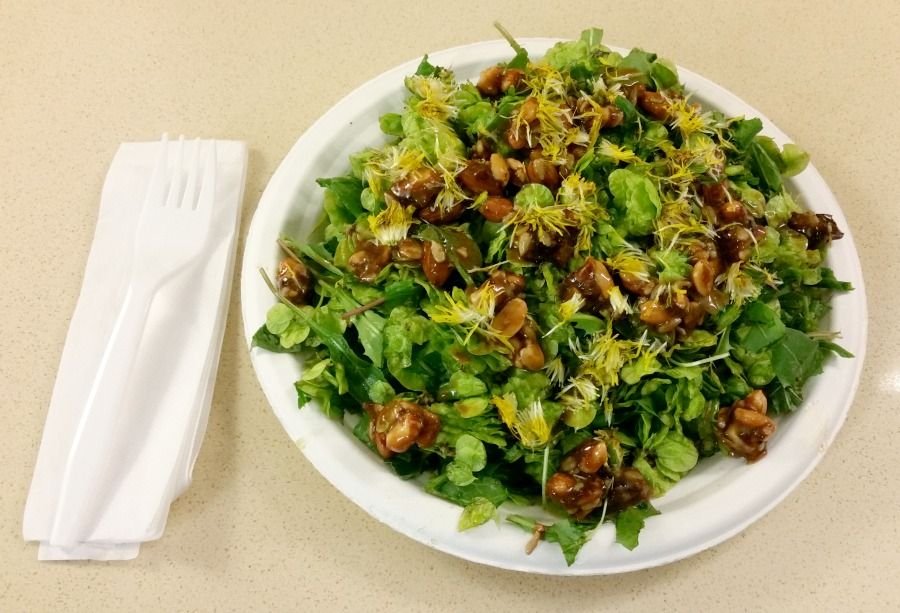
Step 1. Assess My Resources
I've been traveling for work. I'm on the open prairie of the Front Range of Colorado, near Denver. This hotel is nice enough, but my eating options are limited. I can get something from the hotel bar or a microwave burrito at the hotel's little sundries shop. When I am on the road, I miss eating my dense salads from fresh greens!
Here's my challenge. This is what I was looking at out the back of my hotel. All the other directions were buildings, roads, and parking lots. What made me think I would find anything to eat? Spring is barely here. Well, I can see some green on the ground, meaning there are some plants of some sort. And then look at those trees! See their green? I recognize these old friends - introduced from Asia long ago, they have become a common weed tree of the prairies. Siberian Elm trees (Ulmus pumila) with their tender young seeds! Score!
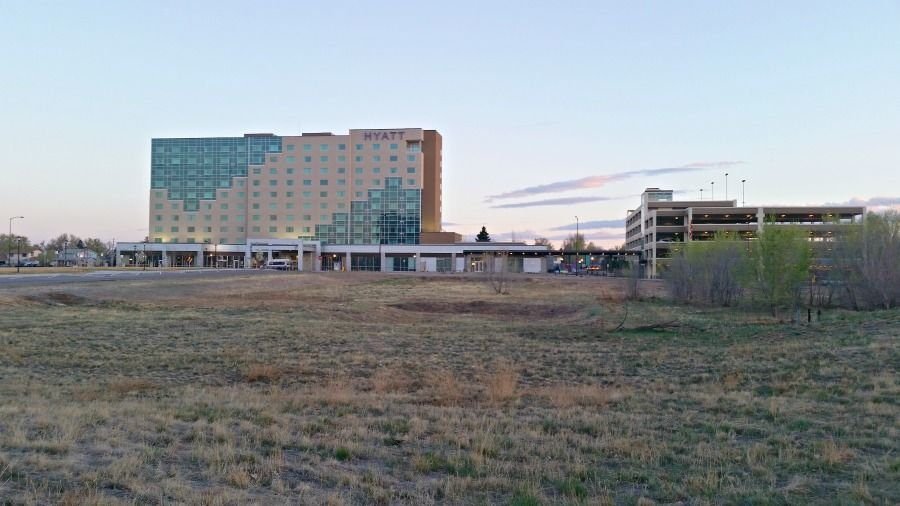
What will I use to gather my weeds? What will I use to prepare and hold my food? I do a quick assessment of my hotel room. I can use the plastic bag that's in the ice bucket to gather my greens. And look, this hotel has a microwave complete with a paper plate and utensils, including a little plastic knife. I'm good to go! Let's get to foraging while there is still some daylight!
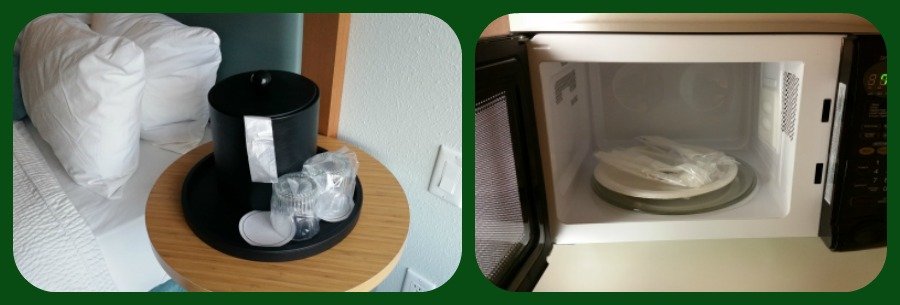
Step 2. Forage!
Am I worried about soil contamination? I can tell that this field was mowed in the fall, when it had tall weeds. I can still see some of the stalks laying on the ground. And the plants that I find are established perennials, emerging in the early spring from their roots. That tells me that this field was only mowed -- not sprayed with weed killer. I'm OK with this, especially for one meal.
I don't worry about over-harvesting, either. This area is destined to be a parking garage, another hotel, or some office building. At least I am out acknowledging the existence of these plants and appreciating them while they are here.
So what did I find? I only found four different plants, but they are all good ones in a mixed salad. Can you tell what they are? I'll put the caption under the picture, if you want to test yourself. The scientific names are in the plant list, as usual, toward the end of this post.
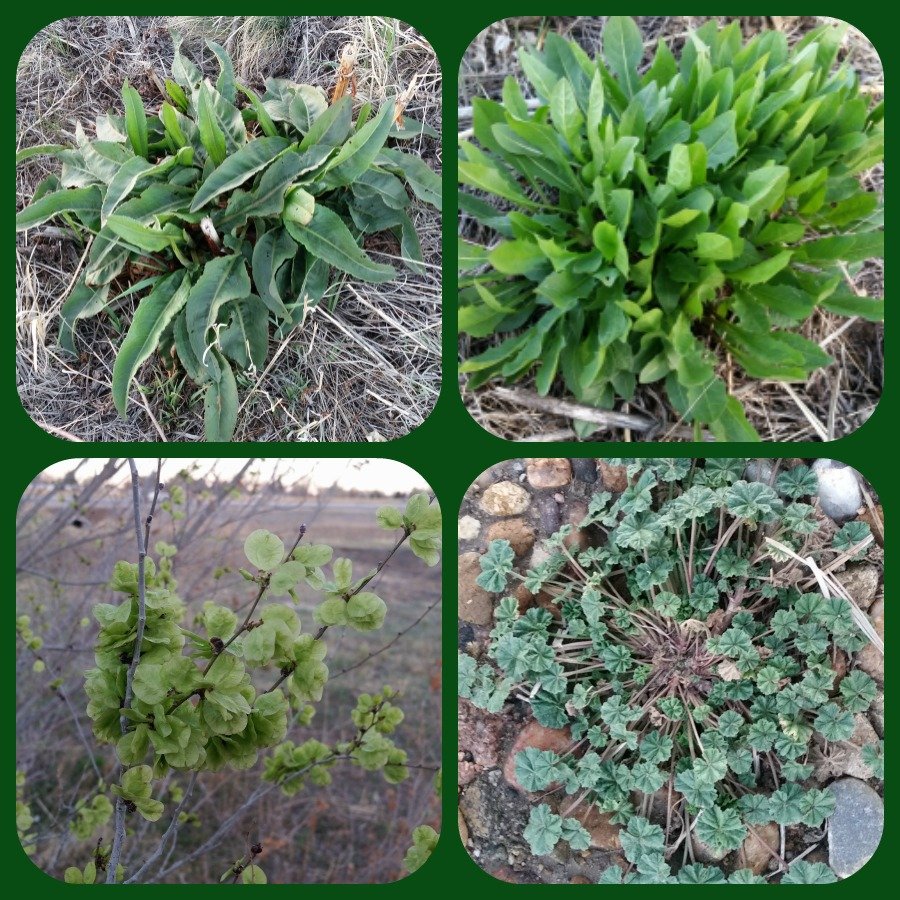
If you have read any of my earlier foraging posts or watch any of my foraging videos on YouTube, you know what I stress -- Pick Clean! Pick Organized! In this case, I just have one bag, so it's especially important to pick clean -- only pick the high-quality tender young growth, no chaff or dried plant material, and certainly, no other kinds of plants!
Step 3. Prepare My Salad
I come back with plenty of greens! I do need to wash them all really well. I put the plastic bag in the ice bucket, fill it with water, and let my greens soak for a bit before I swish them around in the water. While I'm washing them, I find the dandelion flowers that I picked from older plants that wouldn't make good greens. I keep those flowers off to the side to put the petals on top of my salad.
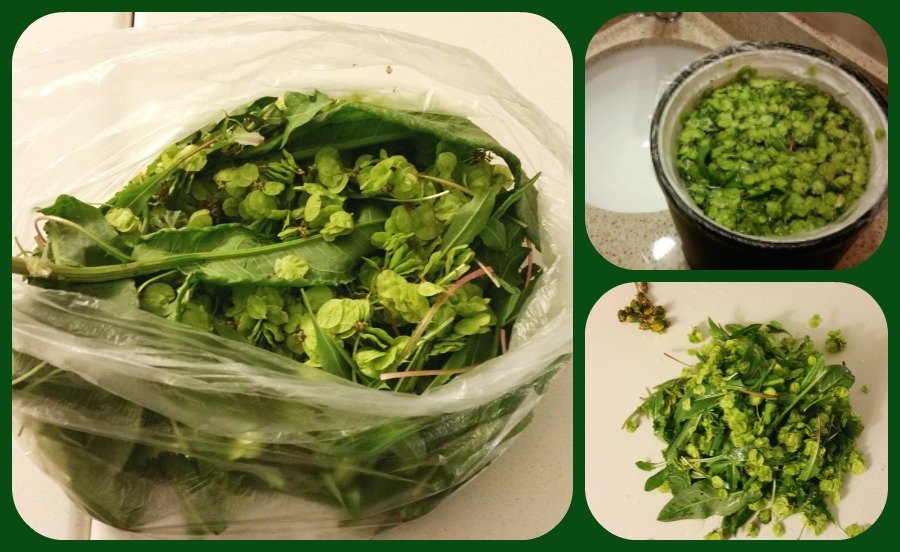
While I'm letting my greens soak, I make my dressing. I brought a fruit-nut granola bar with me. And I got these seasoning packets with my fast food lunch during an airport layover earlier in the day. I mix all of them together for my dressing. I'm not going to pretend that this dressing is the best thing going -- a good Balsamic Vinaigrette would have been so nice -- but it is a decent salad dressing.
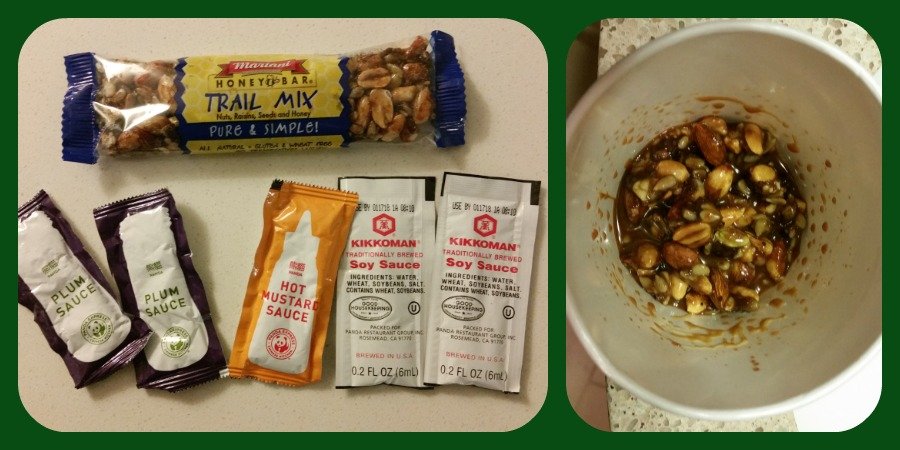
I use the little plastic knife to chop all my greens really fine. That mixes the flavors of all the greens and makes any wild salad taste more complex and interesting. I top the salad with my dressing and the dandelion petals and I am ready to eat.
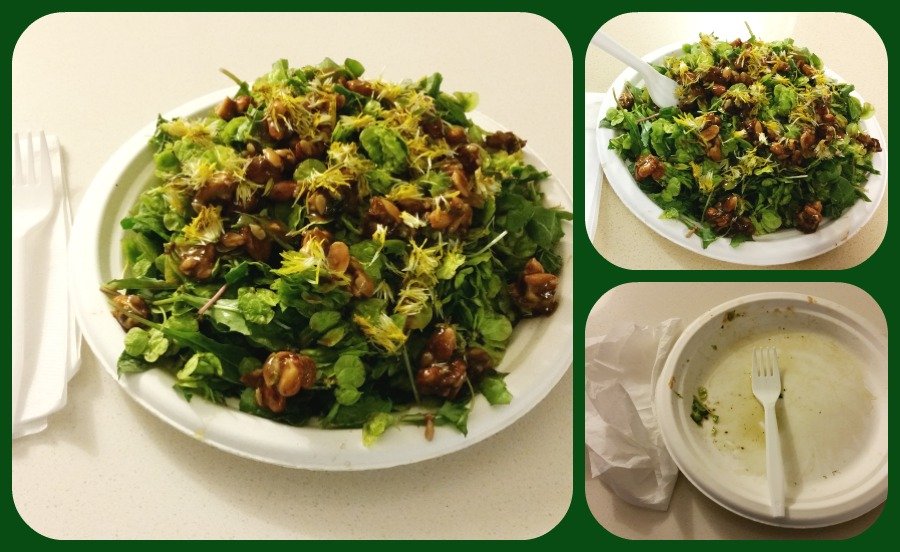
This salad was definitely worth eating! It was better than buying a frozen burrito from the hotel store and heating it in the microwave, for sure! And I got in a nice walk and had fun finding these plants. This salad was really filling, too. And I know it was fresh and full of phytonutrients!
Plant List
- Curly Dock - also called Yellow Dock - Rumex crispus - tender young leaves
- Dandelion – Taraxacum officinale - tender young leaves and flower petals
- Common mallow - Malva neglecta - tender young leaves
- Siberian elm - Ulmus pumila - green seeds and their husks -
What Do You Think?
- If I shared my salad, would you eat some?
- Did you recognize any of these plants?
- Do you have any of these plants around you? What wild plants are you eating this spring?
- Do you get tired of hotel food when you travel?
I write about foraging because I believe that we can all have lives that are richer, more secure, more grounded, and more interesting by getting to know the plants and the land around us – in our yards, our parks, and our wilderness.
I would like Steemit to be the premier site for Foraging on the Internet! If you have any thoughts about foraging, or experiences to share, write a post and be sure to use the Foraging tag. And check out the @foraging-trail to see curated quality posts about foraging. Happy Foraging!
** Haphazard Homestead **
*** foraging, gardening, nature, simple living close to the land ***

